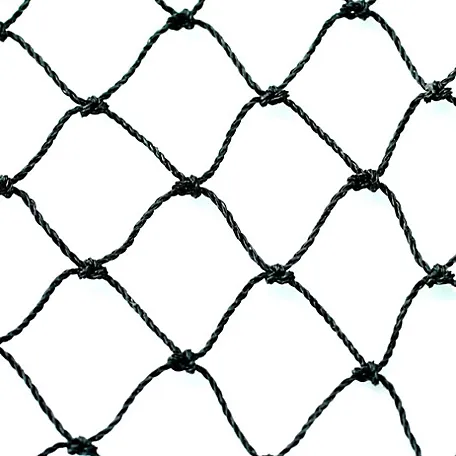-
 Afrikaans
Afrikaans -
 Albanian
Albanian -
 Amharic
Amharic -
 Arabic
Arabic -
 Armenian
Armenian -
 Azerbaijani
Azerbaijani -
 Basque
Basque -
 Belarusian
Belarusian -
 Bengali
Bengali -
 Bosnian
Bosnian -
 Bulgarian
Bulgarian -
 Catalan
Catalan -
 Cebuano
Cebuano -
 China
China -
 Corsican
Corsican -
 Croatian
Croatian -
 Czech
Czech -
 Danish
Danish -
 Dutch
Dutch -
 English
English -
 Esperanto
Esperanto -
 Estonian
Estonian -
 Finnish
Finnish -
 French
French -
 Frisian
Frisian -
 Galician
Galician -
 Georgian
Georgian -
 German
German -
 Greek
Greek -
 Gujarati
Gujarati -
 Haitian Creole
Haitian Creole -
 hausa
hausa -
 hawaiian
hawaiian -
 Hebrew
Hebrew -
 Hindi
Hindi -
 Miao
Miao -
 Hungarian
Hungarian -
 Icelandic
Icelandic -
 igbo
igbo -
 Indonesian
Indonesian -
 irish
irish -
 Italian
Italian -
 Japanese
Japanese -
 Javanese
Javanese -
 Kannada
Kannada -
 kazakh
kazakh -
 Khmer
Khmer -
 Rwandese
Rwandese -
 Korean
Korean -
 Kurdish
Kurdish -
 Kyrgyz
Kyrgyz -
 Lao
Lao -
 Latin
Latin -
 Latvian
Latvian -
 Lithuanian
Lithuanian -
 Luxembourgish
Luxembourgish -
 Macedonian
Macedonian -
 Malgashi
Malgashi -
 Malay
Malay -
 Malayalam
Malayalam -
 Maltese
Maltese -
 Maori
Maori -
 Marathi
Marathi -
 Mongolian
Mongolian -
 Myanmar
Myanmar -
 Nepali
Nepali -
 Norwegian
Norwegian -
 Norwegian
Norwegian -
 Occitan
Occitan -
 Pashto
Pashto -
 Persian
Persian -
 Polish
Polish -
 Portuguese
Portuguese -
 Punjabi
Punjabi -
 Romanian
Romanian -
 Russian
Russian -
 Samoan
Samoan -
 Scottish Gaelic
Scottish Gaelic -
 Serbian
Serbian -
 Sesotho
Sesotho -
 Shona
Shona -
 Sindhi
Sindhi -
 Sinhala
Sinhala -
 Slovak
Slovak -
 Slovenian
Slovenian -
 Somali
Somali -
 Spanish
Spanish -
 Sundanese
Sundanese -
 Swahili
Swahili -
 Swedish
Swedish -
 Tagalog
Tagalog -
 Tajik
Tajik -
 Tamil
Tamil -
 Tatar
Tatar -
 Telugu
Telugu -
 Thai
Thai -
 Turkish
Turkish -
 Turkmen
Turkmen -
 Ukrainian
Ukrainian -
 Urdu
Urdu -
 Uighur
Uighur -
 Uzbek
Uzbek -
 Vietnamese
Vietnamese -
 Welsh
Welsh -
 Bantu
Bantu -
 Yiddish
Yiddish -
 Yoruba
Yoruba -
 Zulu
Zulu
bird net to catch birds
Bird Netting An Effective Method for Bird Catching
Bird netting is a widely used technique in ornithology, wildlife research, and certain agricultural practices. It involves the use of fine mesh nets designed to catch birds without causing them harm. This method has gained popularity due to its effectiveness and the humane way it allows researchers and enthusiasts to study avian species, monitor their populations, and better understand their behaviors. Behind the practicality of bird netting lie environmental considerations, ethical concerns, and advances in technology, making it a multifaceted subject deserving of exploration.
Understanding Bird Netting
Bird netting typically consists of lightweight and durable materials that can be easily deployed in various environments. Researchers, wildlife biologists, and bird watchers set up nets strategically in areas where birds are known to forage, nest, or migrate. Once the birds become entangled in the net, they can be safely extracted and examined. This process often includes banding, which involves attaching a small, uniquely numbered metal or plastic tag to a bird's leg to track its movements.
Applications of Bird Netting
1. Wildlife Studies Bird netting plays a crucial role in ornithology. Researchers can gather data on population dynamics, breeding patterns, and migratory behaviors. By studying these factors, scientists contribute significantly to the conservation and management of bird populations.
2. Conservation Efforts For many endangered species, monitoring and preserving habitat is paramount. Bird netting allows conservationists to capture and study these vulnerable birds, ensuring they receive appropriate protection and intervention when necessary. This method has proven particularly effective for species that are difficult to observe in the wild.
3. Agricultural Use In farming, bird netting is frequently employed to protect crops from bird damage. By strategically covering fields and orchards with nets, farmers can prevent birds from eating their produce, leading to better yields and less reliance on chemical deterrents.
bird net to catch birds

Ethical Considerations
While bird netting is generally considered humane, it raises essential ethical questions. The primary concern is the potential stress it can cause birds during capture. To mitigate this, researchers are trained to handle birds quickly and efficiently, minimizing their time in captivity. Additionally, nets must be regularly monitored to prevent birds from remaining entangled for prolonged periods.
It is also crucial to consider the impact of netting on local ecosystems. Excessive or careless use can lead to unintended consequences, such as the capture of non-target species or juvenile birds. Responsible netting practices, ethical guidelines, and appropriate training are vital for minimizing such risks. Organizations involved in bird research advocate for following strict protocols to ensure that the benefits outweigh any possible harm.
Technological Advances
Recent technological advancements have enhanced the efficacy and safety of bird netting. Innovations such as mist nets with improved visibility have reduced the chances of bird collisions. Additionally, bioacoustic monitoring techniques are often employed alongside netting to gather more data without increasing capture stress on birds. Drones equipped with cameras can also scout for optimal netting locations, streamlining the process and reducing ecological disturbance.
Conclusion
Bird netting stands at the intersection of science, conservation, and agriculture, offering a vital tool for understanding and preserving avian species. As this method continues to evolve, it remains essential for researchers, conservationists, and farmers to approach bird netting with a deep sense of responsibility and care. By balancing effective bird capture with ethical considerations, we can ensure the wellbeing of our feathered friends while advancing our knowledge and efforts in conservation. In the end, bird netting not only helps us catch birds but also fosters a greater understanding of the avian world and our shared environment.
-
Shipping Plastic Bags for Every NeedNewsJul.24,2025
-
Safety Netting: Your Shield in ConstructionNewsJul.24,2025
-
Plastic Mesh Netting for Everyday UseNewsJul.24,2025
-
Nylon Netting for Every UseNewsJul.24,2025
-
Mesh Breeder Box for Fish TanksNewsJul.24,2025
-
Expanded Steel Mesh Offers Durable VersatilityNewsJul.24,2025











